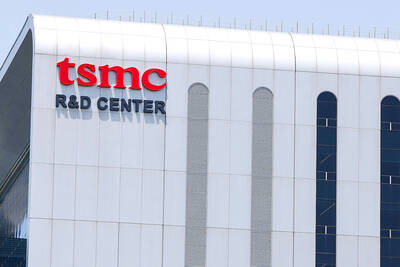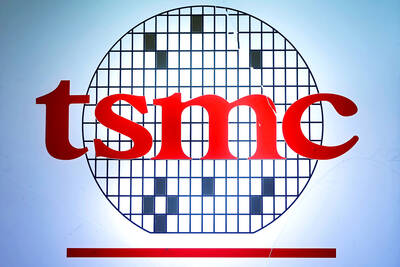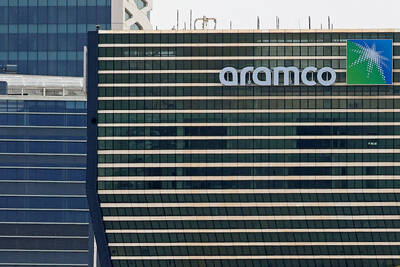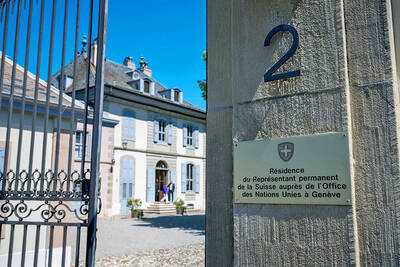Coco Chanel once said that luxury was the opposite of vulgarity. As mega-brands fight for a slice of the booming global fashion market, some observers are asking: Where is the luxury today?
Chanel, which has become one of the world's biggest fashion firms since the death of its founder in 1971, on Friday staged a star-studded catwalk show that was one of the most hotly hyped events of Paris fashion week.
Actress Kirsten Dunst chatted with her Marie Antoinette co-star Marianne Faithfull in the front row, while a tanned and blonde Victoria Beckham stopped to kiss top fashion editors on the cheeks.
With massive global advertising campaigns, Chanel's interlocked double-C logo has become as recognizable as McDonald's Golden Arches -- and therein lies the rub.
Journalist Dana Thomas, author of Deluxe: How Luxury Lost Its Luster, believes luxury brands have lost their cachet since large conglomerates started snapping up family-owned businesses during a wave of acquisitions in the 1990s.
"It went mass -- the businessmen started hyping the brands and focusing on the logo and stamping it on everything from bikinis to handbags to scarves," she said,
"And many of these companies, as soon as they were publicly traded, started worrying more about the bottom line than how well the hemline was sewed together," she added.
In her book, she describes how many of the products being sold with prestigious "made in Italy" or "made in France" labels are in reality produced on assembly lines in developing countries, with just the finishing touches added in Europe.
"You're not buying what you think you're buying," said Thomas, who agreed not to name names in the book in exchange for being granted access to factories in countries like China.
Privately held Chanel does not publish sales figures, but industry sources estimate its annual revenues at some US$4 billion.
The firm staged its spring-summer ready-to-wear show on a bombastic set inside the Grand Palais, a recently restored 19th-century glass-and-steel structure near the Seine river.
Models strutted in star-pattered blue dresses with red-and-white striped jackets -- perfect for campaigning on the US presidential election trail next summer. Denim swimsuits and matching jackets and jeans were faded to different shades of blue and teamed with rows of pearls that gave the casual outfits an offhanded elegance.
Front row guest Claudia Schiffer said she was struck by how impersonal the shows had become since she and her fellow supermodels worked the catwalk in the 1990s.
"The models have become numbers, while in the 1990s we were all known by name," she said.
At Sonia Rykiel, they still do things the old way. Models wrapped in swirls of pastel chiffon and feather boas smiled and danced for the finale of the joyful presentation -- and you could tell they were getting a real kick out of it.
Nathalie Rykiel, artistic director of the French label founded by her mother, said the family touch was what made the brand special. She has turned down purchase offers and is determined to keep the business in private hands for as long as she can.
"I respect the money, and the business has changed and therefore you need a lot of money today to be in this business. But I feel the press and everybody in the fashion world respects Sonia Rykiel as a different company," she explained.
British designer Alexander McQueen turned his show into a tribute to his mentor, the eccentric British fashion editor Isabella Blow, who took her life last May.
The air hung heavy with the scent of Fracas, Blow's favorite perfume, and models paraded in her signature look of radical tailoring paired with outlandish Philip Treacy hats.
The mind-blowing headgear included a cluster of red butterflies that topped a skintight gray wool dress, and a glittering black lace visor with a matching body tattoo.
As a model hobbled past in a pink funnel skirt and Japanese-style sculpted shoes, one could imagine the former front-row fixture clapping with glee.

BIG BUCKS: Chairman Wei is expected to receive NT$34.12 million on a proposed NT$5 cash dividend plan, while the National Development Fund would get NT$8.27 billion Taiwan Semiconductor Manufacturing Co (TSMC, 台積電), the world’s largest contract chipmaker, yesterday announced that its board of directors approved US$15.25 billion in capital appropriations for long-term expansion to meet growing demand. The funds are to be used for installing advanced technology and packaging capacity, expanding mature and specialty technology, and constructing fabs with facility systems, TSMC said in a statement. The board also approved a proposal to distribute a NT$5 cash dividend per share, based on first-quarter earnings per share of NT$13.94, it said. That surpasses the NT$4.50 dividend for the fourth quarter of last year. TSMC has said that while it is eager

‘IMMENSE SWAY’: The top 50 companies, based on market cap, shape everything from technology to consumer trends, advisory firm Visual Capitalist said Taiwan Semiconductor Manufacturing Co (TSMC, 台積電) was ranked the 10th-most valuable company globally this year, market information advisory firm Visual Capitalist said. TSMC sat on a market cap of about US$915 billion as of Monday last week, making it the 10th-most valuable company in the world and No. 1 in Asia, the publisher said in its “50 Most Valuable Companies in the World” list. Visual Capitalist described TSMC as the world’s largest dedicated semiconductor foundry operator that rolls out chips for major tech names such as US consumer electronics brand Apple Inc, and artificial intelligence (AI) chip designers Nvidia Corp and Advanced

Saudi Arabian Oil Co (Aramco), the Saudi state-owned oil giant, yesterday posted first-quarter profits of US$26 billion, down 4.6 percent from the prior year as falling global oil prices undermine the kingdom’s multitrillion-dollar development plans. Aramco had revenues of US$108.1 billion over the quarter, the company reported in a filing on Riyadh’s Tadawul stock exchange. The company saw US$107.2 billion in revenues and profits of US$27.2 billion for the same period last year. Saudi Arabia has promised to invest US$600 billion in the US over the course of US President Donald Trump’s second term. Trump, who is set to touch

SKEPTICAL: An economist said it is possible US and Chinese officials would walk away from the meeting saying talks were productive, without reducing tariffs at all US President Donald Trump hailed a “total reset” in US-China trade relations, ahead of a second day of talks yesterday between top officials from Washington and Beijing aimed at de-escalating trade tensions sparked by his aggressive tariff rollout. In a Truth Social post early yesterday, Trump praised the “very good” discussions and deemed them “a total reset negotiated in a friendly, but constructive, manner.” The second day of closed-door meetings between US Secretary of the Treasury Scott Bessent, US Trade Representative Jamieson Greer and Chinese Vice Premier He Lifeng (何立峰) were due to restart yesterday morning, said a person familiar